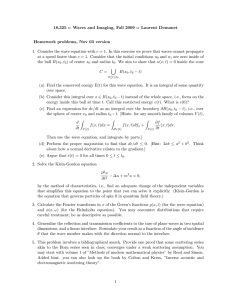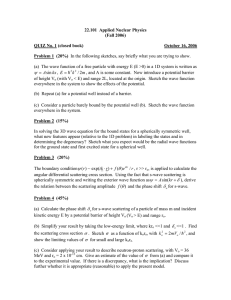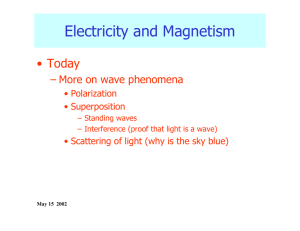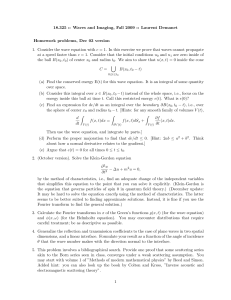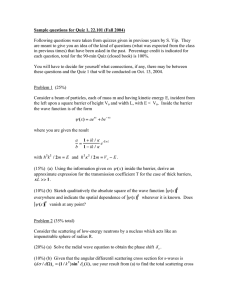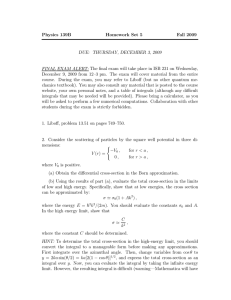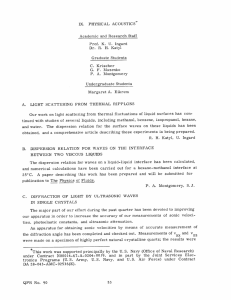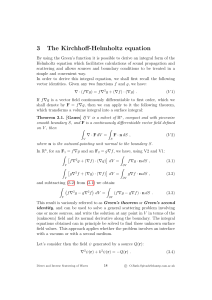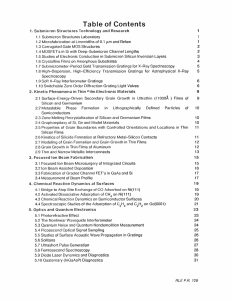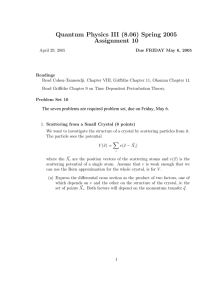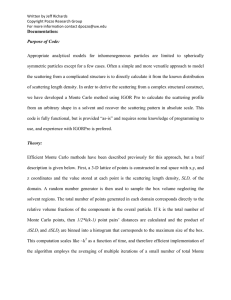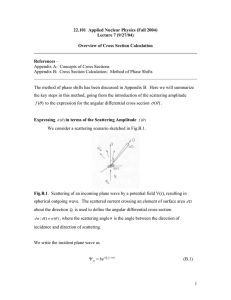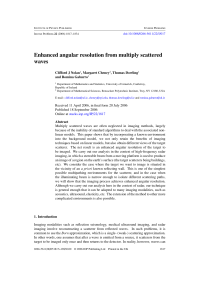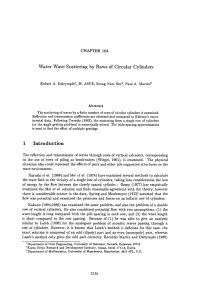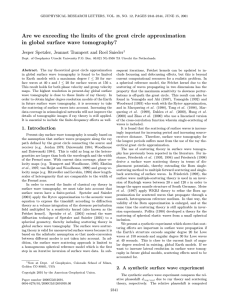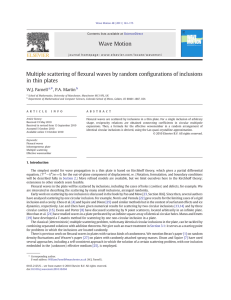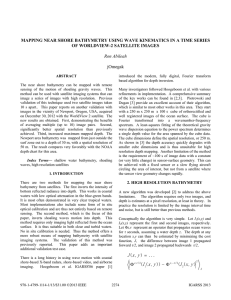18.325 :: Waves and Imaging, Fall 2009 :: Laurent Demanet
advertisement
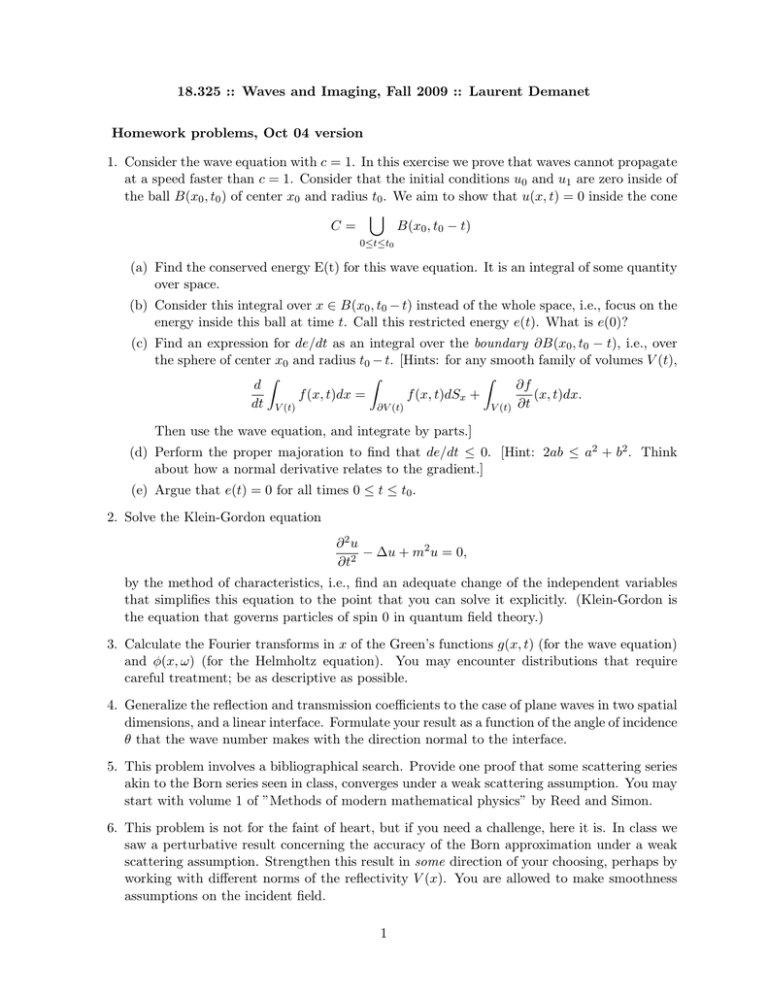
18.325 :: Waves and Imaging, Fall 2009 :: Laurent Demanet Homework problems, Oct 04 version 1. Consider the wave equation with c = 1. In this exercise we prove that waves cannot propagate at a speed faster than c = 1. Consider that the initial conditions u0 and u1 are zero inside of the ball B(x0 , t0 ) of center x0 and radius t0 . We aim to show that u(x, t) = 0 inside the cone [ B(x0 , t0 − t) C= 0≤t≤t0 (a) Find the conserved energy E(t) for this wave equation. It is an integral of some quantity over space. (b) Consider this integral over x ∈ B(x0 , t0 − t) instead of the whole space, i.e., focus on the energy inside this ball at time t. Call this restricted energy e(t). What is e(0)? (c) Find an expression for de/dt as an integral over the boundary ∂B(x0 , t0 − t), i.e., over the sphere of center x0 and radius t0 − t. [Hints: for any smooth family of volumes V (t), Z Z Z d ∂f f (x, t)dx = f (x, t)dSx + (x, t)dx. dt V (t) ∂V (t) V (t) ∂t Then use the wave equation, and integrate by parts.] (d) Perform the proper majoration to find that de/dt ≤ 0. [Hint: 2ab ≤ a2 + b2 . Think about how a normal derivative relates to the gradient.] (e) Argue that e(t) = 0 for all times 0 ≤ t ≤ t0 . 2. Solve the Klein-Gordon equation ∂2u − ∆u + m2 u = 0, ∂t2 by the method of characteristics, i.e., find an adequate change of the independent variables that simplifies this equation to the point that you can solve it explicitly. (Klein-Gordon is the equation that governs particles of spin 0 in quantum field theory.) 3. Calculate the Fourier transforms in x of the Green’s functions g(x, t) (for the wave equation) and φ(x, ω) (for the Helmholtz equation). You may encounter distributions that require careful treatment; be as descriptive as possible. 4. Generalize the reflection and transmission coefficients to the case of plane waves in two spatial dimensions, and a linear interface. Formulate your result as a function of the angle of incidence θ that the wave number makes with the direction normal to the interface. 5. This problem involves a bibliographical search. Provide one proof that some scattering series akin to the Born series seen in class, converges under a weak scattering assumption. You may start with volume 1 of ”Methods of modern mathematical physics” by Reed and Simon. 6. This problem is not for the faint of heart, but if you need a challenge, here it is. In class we saw a perturbative result concerning the accuracy of the Born approximation under a weak scattering assumption. Strengthen this result in some direction of your choosing, perhaps by working with different norms of the reflectivity V (x). You are allowed to make smoothness assumptions on the incident field. 1 7. The treatment of reverse-time migration seen in class involves data u(r, t) for an interval in time t, and along the surface z = 0 in r. Consider instead the snapshot setup, where t is fixed, and there are receivers everywhere in the domain of interest. (So we have full knowledge of the wavefield at some time t.) Repeat the analysis of the imaging operator, adjoint to the forward operator that forms snapshot data from singly scattered waves. In particular, find what the adjoint-state wave equation becomes in this case. 2



